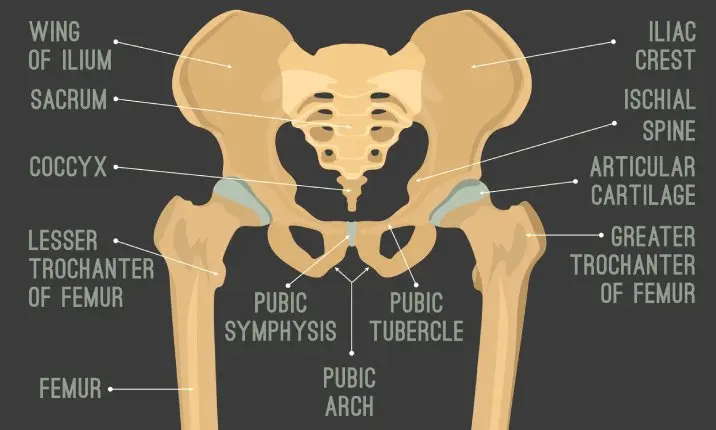Our hips are a crucial element of our body’s design. They provide stability and support to the rest of the body and are drivers of our everyday movement. When the hip joint faces a blow, it’s no small matter, and requires immediate medical attention.
But does a hip fracture always require surgery to heal? Dr Ganesan Naidu, orthopaedic surgeon at Parkway East Hospital, sheds light on this question, and the appropriate treatments individuals can seek for hip fractures.
What is the difference between a hip fracture, hip sprain and a hip strain?
Hip fracture
A hip fracture occurs when there is a break or crack in the bones that make up the hip joint, otherwise known as the ball and socket joint. The ball refers to the femoral head, and the socket refers to the acetabulum. The most common type of hip fracture is a fracture of the femoral neck or the intertrochanteric region of the femur (thigh bone).
Fractures are usually caused by high-impact collisions or falls. There are also risk factors that can increase your likelihood of falling down and getting a hip fracture, or suffering from a hip fracture from sudden twists and turns. These risk factors include osteoporosis, an overactive thyroid, taking certain medications, or a sedentary lifestyle.
Hip sprain
A hip sprain involves the stretching or tearing of ligaments in the hip joint. Ligaments are tough, fibrous tissues that connect bones to each other and provide stability to joints.
Hip sprains usually result from sudden twisting, suddenly changing direction while running or overstretching.
Hip strain
A hip strain involves the stretching or tearing of muscles and/or tendons in the hip joint.
Hip strains can result from muscle tightness, overuse, prior injury to the area, or not stretching or warming up before exercise.
Can I walk with a hip fracture?
It would usually be very painful to stand, walk or place any weight on your leg with a hip fracture. However, it may be possible depending on the location and severity of the fracture. You may also experience other symptoms which can make walking painful. These include severe pain in the hip or lower groin, swelling along the site of your injury, or even bone protrusion through the skin.
If you suspect you have a hip fracture, or have just faced a collision or heavy impact to your joints, it is advised that you don’t put any further weight on them and seek emergency medical care.
What are the complications if a hip fracture is left unattended?
Hip fractures require immediate medical attention, and leaving it unattended can leave serious consequences on the individual’s health, and can even be life threatening. Some of these are:
- Worsening pain and discomfort at the site of injury
- Long-term mobility issues
- Blood clots in the veins of the legs (deep vein thrombosis) which can dislodge and travel to the lungs, leading to a life threatening condition known as pulmonary embolism.
- Delayed and inappropriate healing of the fractured bones
Can a hip fracture heal without surgery?
Determining whether a hip fracture can heal with or without surgery depends on the results of medical investigation such as an X-ray, MRI or a CT scan, which will help the doctor identify the location and extent of the injury.
The age and health profile of the patient will also play a part in determining if a hip fracture can heal with or without surgery.
In these few cases, a hip fracture may be recommended to heal without surgery:
- The hip fracture is non-displaced
A non-displaced fracture refers to a situation where the bones remain in alignment after the fracture. - The patient's overall health is poor
For a patient with a poor health profile, a doctor will need to determine if surgery is not feasible or could pose significant risks.
Non-surgical treatment for hip fractures
In the few cases where surgery is not recommended by a doctor, there may be several ways a hip fracture can be encouraged to heal and pain can be managed.
Assistive devices
These may include crutches, a walker, or a wheelchair that can help the patient relieve weight on the affected hip. Orthotic devices such as braces or splints may also be used to stabilise the hip joint and facilitate healing.
Pain medication
Your doctor may prescribe pain medications such as acetaminophen, nonsteroidal anti-inflammatory drugs (NSAIDs), opioids or nerve block injections to help manage pain.
Physical therapy
Physical therapy can help maintain mobility, strengthen muscles, and improve balance and coordination for hip fracture patients. A physical therapist can recommend exercises tailored to your condition and abilities to aid in your recovery.
Nutrition and supplements
Proper nutrition including an adequate intake of calcium and vitamin D can support bone health and healing. Your doctor may also recommend supplements if necessary.
It is crucial to check in on your progress with your doctor regularly so necessary adjustments to your treatment plan can be made for optimal healing.
Surgical intervention for hip fractures
The goal of surgery is to stabilise the fracture, relieve pain, restore function, and minimise complications such as non-union (failure of the bone to heal) and avascular necrosis (death of bone tissue due to inadequate blood supply). Physiotherapy, the use of assistive devices, and medication are often prescribed to improve recovery, manage pain and prevent blood clots and infections post-surgery.
The choice of surgical treatment depends on various factors, including the type of fracture, patient's age and overall health.
Below are the different types of surgical treatments for a hip fracture:
- Hip pinning (Internal Fixation): In this procedure, the surgeon inserts metal screws or pins into the fractured bone to hold the broken pieces together. This is commonly used for fractures in the femoral neck or intertrochanteric region.
- Hip replacement (Arthroplasty): In cases of severe hip fractures, particularly in older adults with osteoporosis, a hip replacement surgery may be necessary. This involves replacing the damaged parts of the hip joint with artificial implants (prostheses) made of metal, plastic, or ceramic.
- Partial hip replacement (Hemiarthroplasty): This procedure is commonly used for fractures involving the femoral neck, and involves only the femoral head being replaced with an artificial implant.
Prevention
Hip fractures may not always be avoidable, especially in the case of an accident. However, hip fractures related to a sedentary lifestyle or certain age-related falls can be prevented by getting enough vitamin D and engaging in regular exercise that is appropriate for you. Speak to a doctor before you begin any new form of exercise to ensure that what you’re doing is safe and will not aggravate existing medical conditions.
For individuals with osteoporosis, bisphosphonates oral medication and prolia injections can be considered to strengthen bones and aid in fall and injury prevention.
Whether you prefer surgical or non-surgical treatments for a hip fracture, it’s simply not wise to ‘wait and see’ before seeing a doctor. Seeking emergency medical care is critical as leaving the injury unattended can lead to sub-optimal recovery, and even life-threatening complications. Start making your bone health a priority by ensuring you stay away from risk factors, manage your fitness and again — check out concerning symptoms in a timely manner.
















